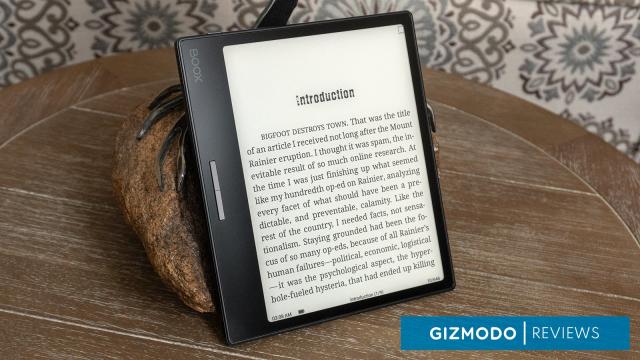When it comes to choosing an e-reader, for most users it comes down to which device has easy access to the books they actually want to read, and the answer is usually either the Amazon Kindle or the Rakuten Kobo. There’s now a third option, the Boox Leaf 2 from Onyx, that lets users buy books from the competition’s e-book stores, without having to settle for either company’s locked-down devices.
Unless you’re as obsessed with E Ink devices as I am, or live outside the United States, Onyx might not be a company you’ve heard of before. And that’s a shame, because for the past few years it’s been putting together an extensive lineup of e-reader and e-note devices that really do put the established brands to shame when it comes to performance and functionality. Unlike the Kindle or the Kobo, which each run proprietary operating systems, the Onyx Boox Leaf 2 runs Android 11 beneath a custom front-end, and includes full access to the Google Play Store — including not just ebook apps, but also games and other tools as well.
Is it the perfect e-reader for everyone? No, as it definitely skews towards the customizability-loving Android power user. But if you’re willing to invest some time to get it running exactly how you want, it’s an e-reader that anyone who’s left paper books behind should be seriously considering.
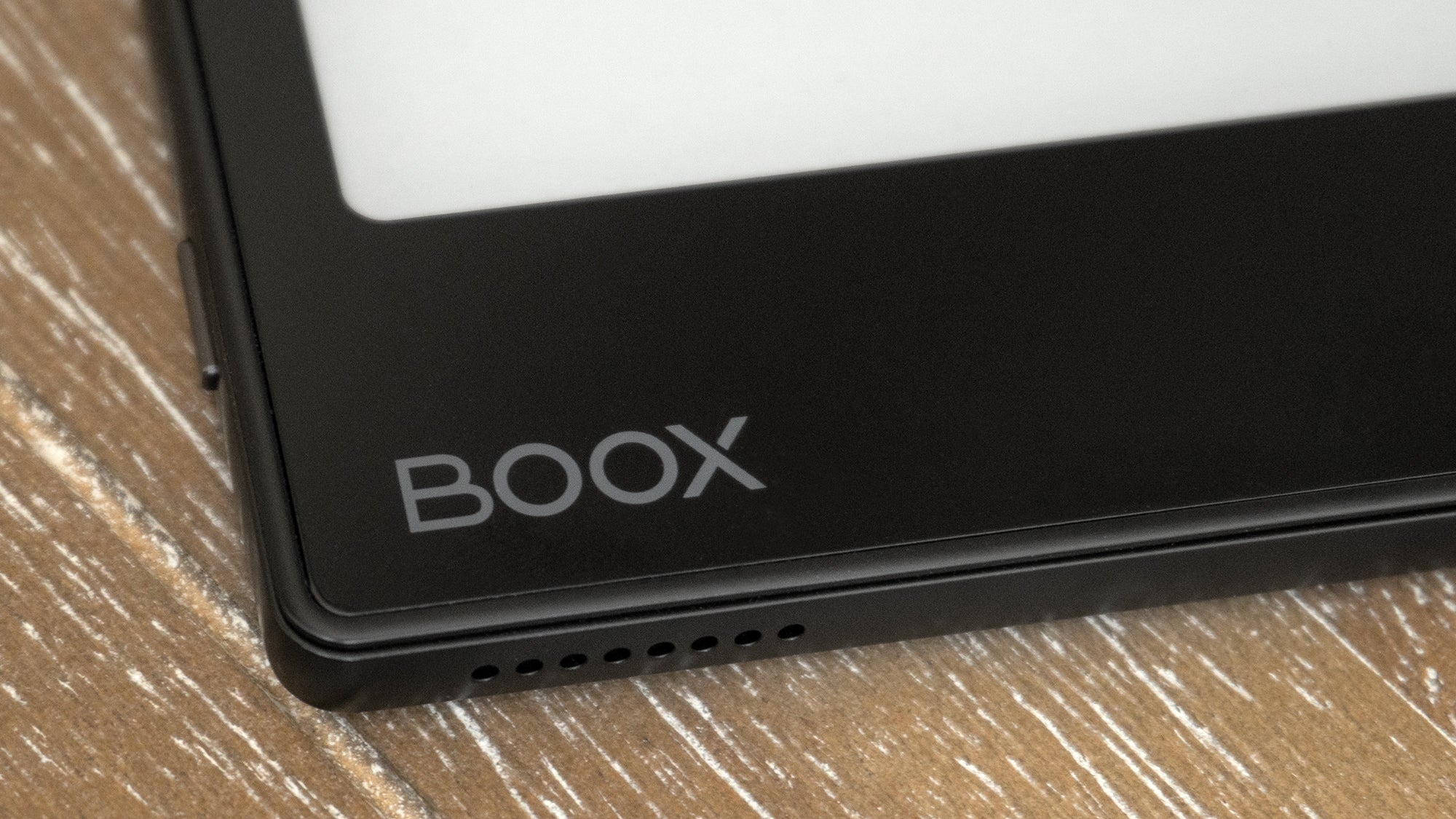
Onyx Boox Leaf 2
WHAT IS IT?
Onyx's latest dedicated e-reader that adds a set of page turn buttons on an extended bezel that's easier to hold single-handedly, plus all the benefits of Android 11 and access to the Google Play Store.
PRICE
$AU199
LIKE
Incredibly customisable, including how the E Ink screen performs. It's also lightweight and sturdy, but the biggest draw is being able to install whatever Android app you want to use, from ebook stores, to ebook readers, to even games and productivity apps.
DISLIKE
It can take a while to customise the Boox Leaf 2 to your liking, and even then the custom Android front-end is lacking the polish found on devices like the Kindles and Kobos, and can occasionally feel a little clunky.
Solid Hardware That Doesn’t Dare to Be Different
By now, if you’ve seen one e-reader, you’ve more or less seen them all. Like smartphones, there’s not a lot of variation between E Ink devices these days, aside from their screen size and where other features like buttons and charging ports are located.
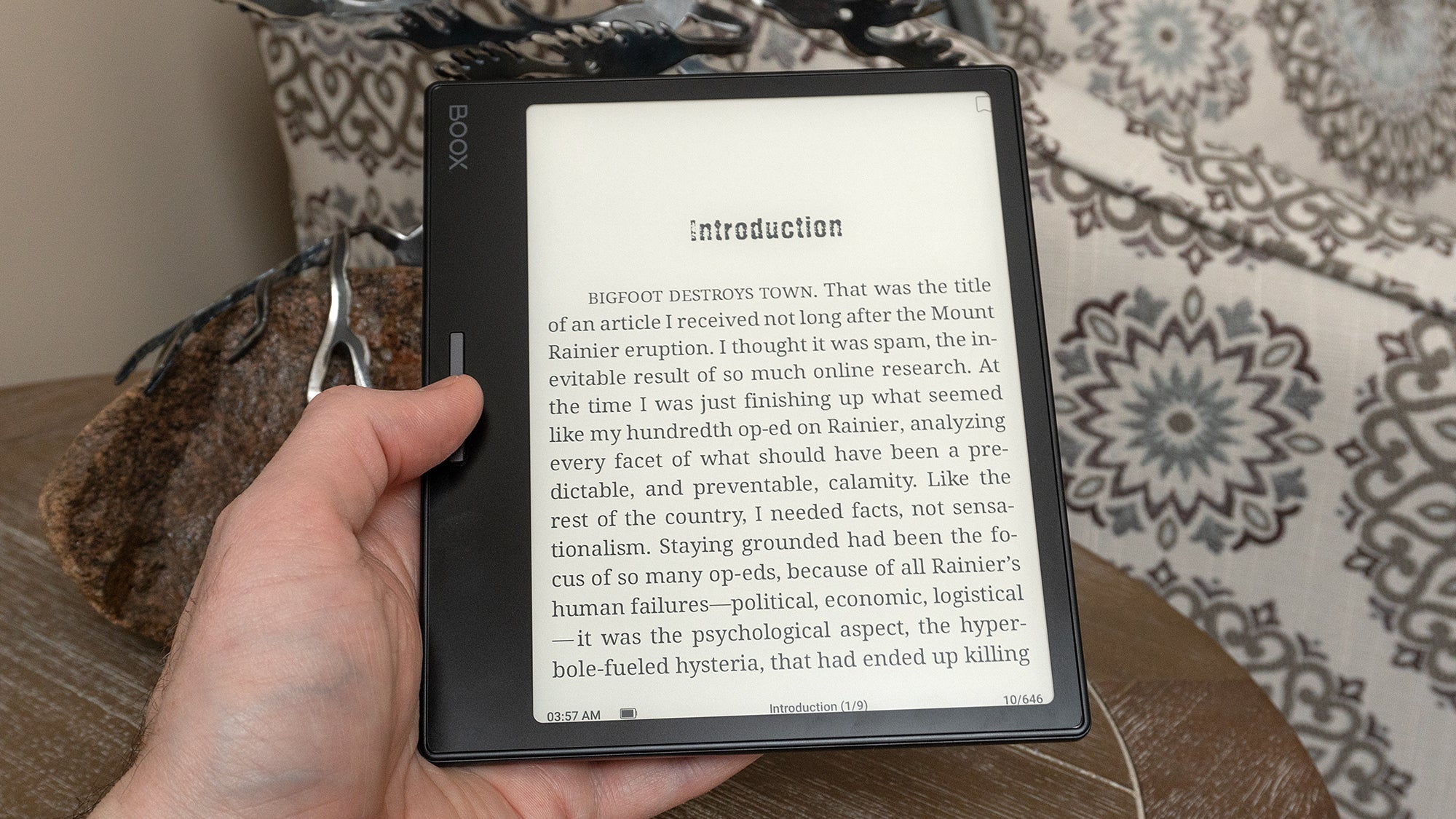
If the Boox branding in the upper corner doesn’t catch their eye, most people would be hard pressed to differentiate the Leaf 2 from the Kindle Oasis or Kobo Libra e-readers, which all feature an asymmetric bezel design, making the devices easier to hold in one hand.
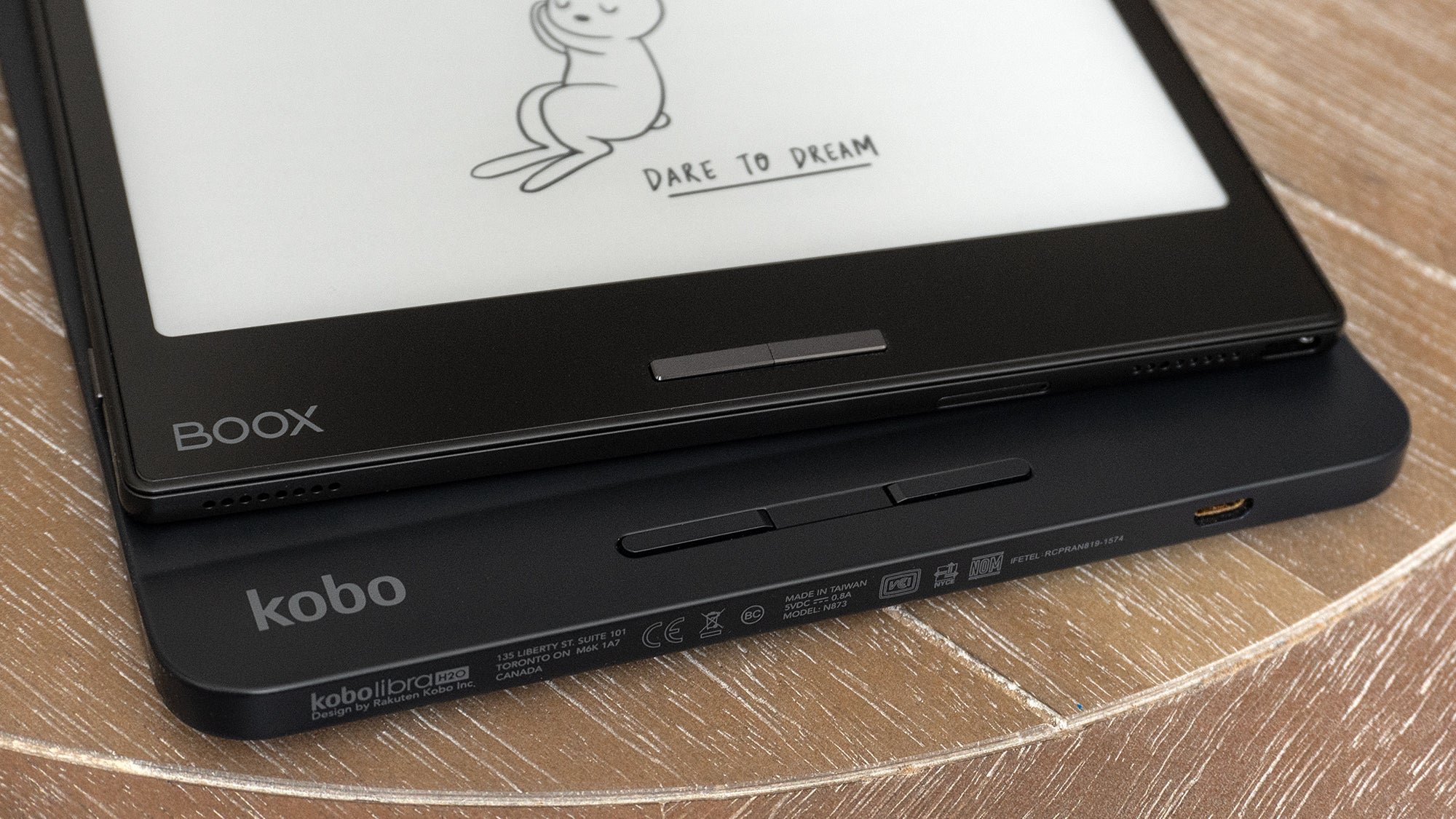
The Boox Leaf 2 is one of the first Onyx devices in a few years to feature dedicated page turn buttons built in, but I’m not entirely thrilled with their execution. I like that the forward and back buttons on the side of the Kindle Oasis and Kobo Libra have a space between them, making them easier to distinguish without having to look. On the Leaf 2, they sit right next to each other with barely a discernible gap between them.
Another thing I’m missing on the Boox Leaf 2 is the raised lip that the Kindle Oasis and Kobo Libra have on the wider side of the bezel, making them easier to grip one-handed. That doesn’t mean the Leaf 2 is hard to hold, as it’s actually surprising light and sturdy, but it’s just another example of how a lack of polish and design acuity is preventing Onyx’s devices from becoming as popular as they deserve to be. But year after year, they’re getting better and better.
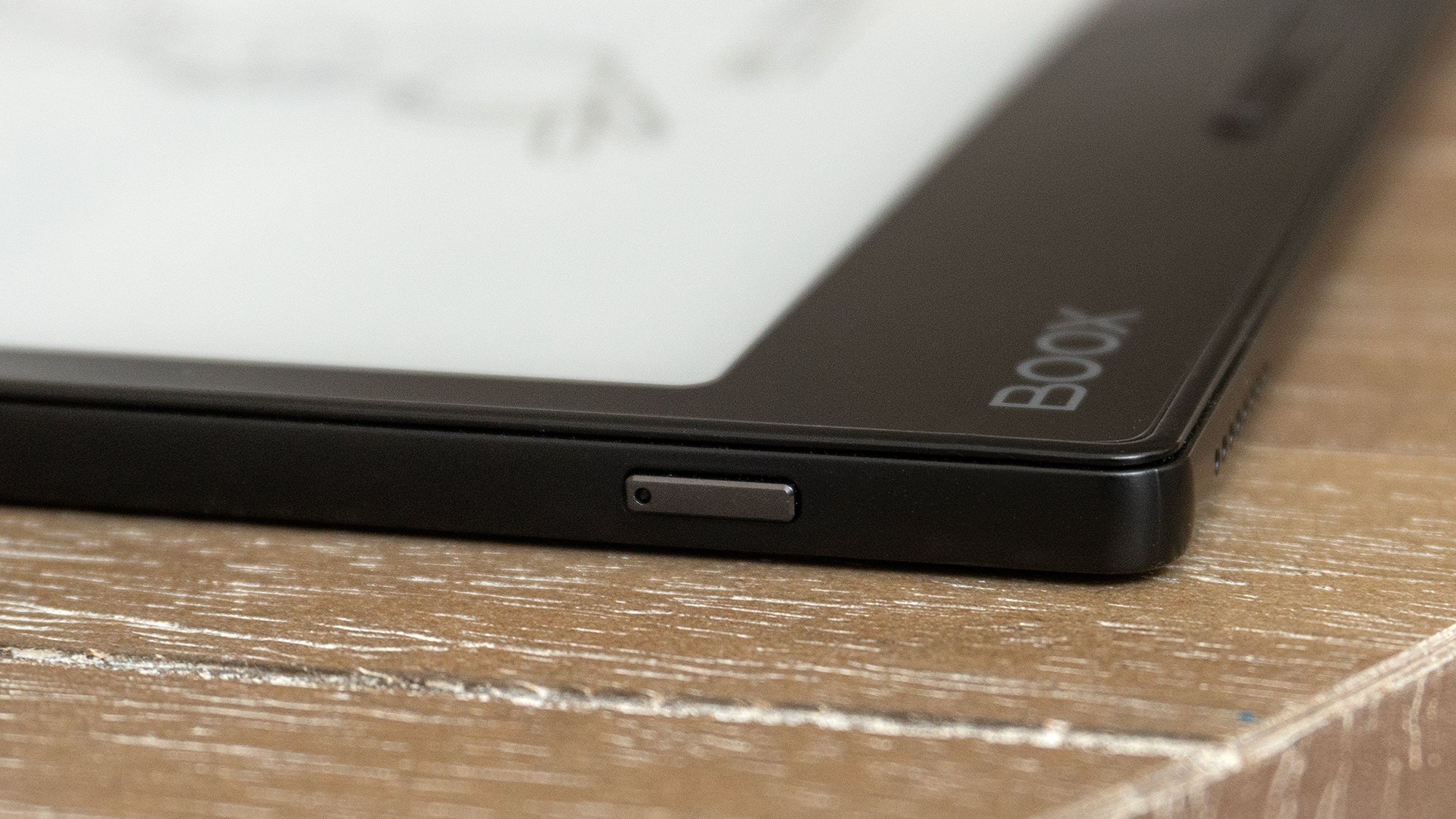
On the top edge of the Leaf 2, you’ll find a combination power/sleep button for temporarily shutting down the e-reader or powering it off completely, while along the edge closest to the page turn buttons are speakers, a USB-C charging port, a microphone, and a slot for a microSD memory card, allowing you to supplement the built-in 32GB of storage.
Overall, I’d describe the Leaf 2’s hardware as minimal and sleek, but its smooth back panel is a fingerprint magnet and is in desperate need of some texturing to make the device easier to grip. That being said, I highly recommend e-readers with asymmetrical bezel designs like this, as I find them much easier to hold without fingers blocking or accidentally tapping the touchscreen, and I would still choose the Leaf 2 over the more basic Kindle and Kobo devices that lack dedicated page turn buttons.
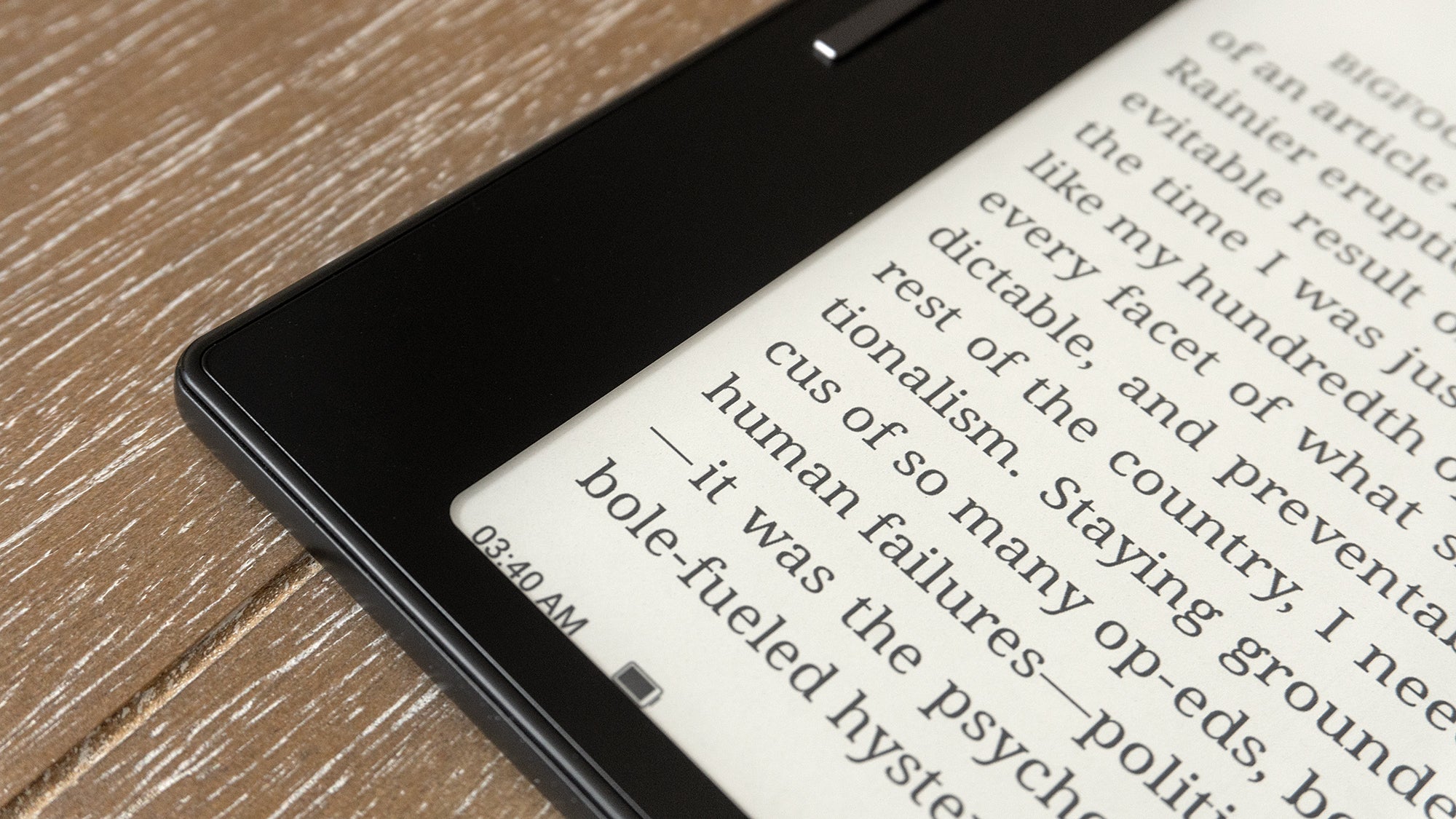
Onyx actually sells two versions of the Boox Leaf 2, in black or white, but it’s not just a colour difference that sets the two options apart. Both models are nearly identical when it comes to their hardware, each coming with the seven-inch, 300PPI, E Ink Carta 1200 screen we’ve already seen in other devices. But whereas the black version, which I tested, has a layer of protective glass over the E Ink panel, resulting in the display sitting flush with the rest of the front of the e-reader, the white version skips the glass panel, with an exposed E Ink panel sitting slightly lower than the surrounding bezel.
The black version offers the benefit of extra durability, particularly if the Leaf 2 is going to be bouncing around unprotected in a bag or backpack, but the extra layer of glass does contribute to screen glare when the device is used in direct sunlight or beneath a lamp, and a slight softening of what’s seen on-screen. It’s not a night and day difference, but when compared closely, text and details on the white version of the Leaf 2 will appear slightly crisper. Both versions are priced exactly the same, and Onyx leaves it up to each user to decide what will work best for their needs. That’s more or less the theme of the Leaf 2 — extreme customizability — which is both a plus and a minus for this device.
Android: The Onyx Leaf 2’s Not-So-Secret Weapon
While the Amazon Kindles and Rakuten Kobos both run a proprietary operating system (a version of Linux under-the-hood on the Kobo), the Boox Leaf 2 runs Android 11, with a custom front-end developed by Onyx.
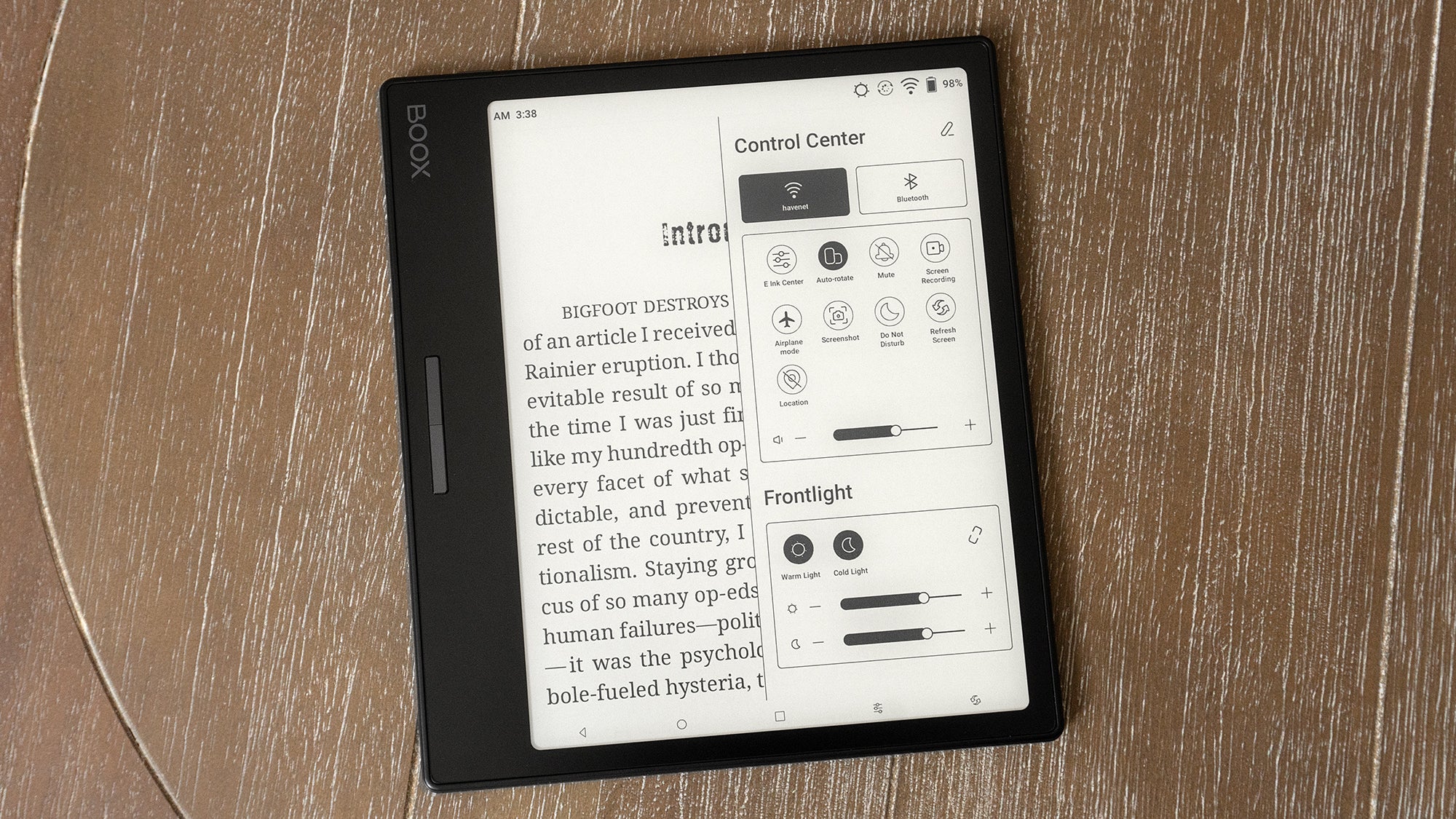
If you’re familiar with Android, and prefer it over more restricted operating systems like Apple’s iOS, you’ll probably find the Leaf 2 a familiar and welcome experience, complete with a Control Centre that’s accessible at all times by swiping down from the top of the screen, and a navigation bar accessible by swiping up from the bottom. Functionally, using the Leaf 2 feels more like using an Android tablet than an e-reader, but visually it looks more like a Kobo or a Kindle thanks to Onyx’s front-end, which is unfortunately lacking a lot of polish.
I’ve said it before with Onyx’s devices, but the custom user interface can feel a bit confusing, clunky, and is far from pretty. You’ll easily find your way around the device after spending some time with it, but it’s far from intuitive, and that could be a big turn off for users already familiar with, and who are fans of, Amazon’s e-readers. Benefiting from Onyx’s e-reader approach takes some determination and perseverance.

If you like to customise the look and feel of your devices, the Leaf 2 is, without a doubt, the e-reader for you. Users can opt to make it feel more like an Android tablet, with menus that pop on-screen from all directions, or switch to a more streamlined interface where swipe gestures on specific parts of the screen make changes, like adjusting screen lighting or volume, without any on-screen controls appearing. Onyx also offers a unique feature on all of its E Ink devices: a tiny on-screen dot that can be positioned anywhere and provides quick access to a small menu of shortcuts that users can configure however they want. I actually hate it, and immediately turned it off, but I can understand the potential usefulness it offers.
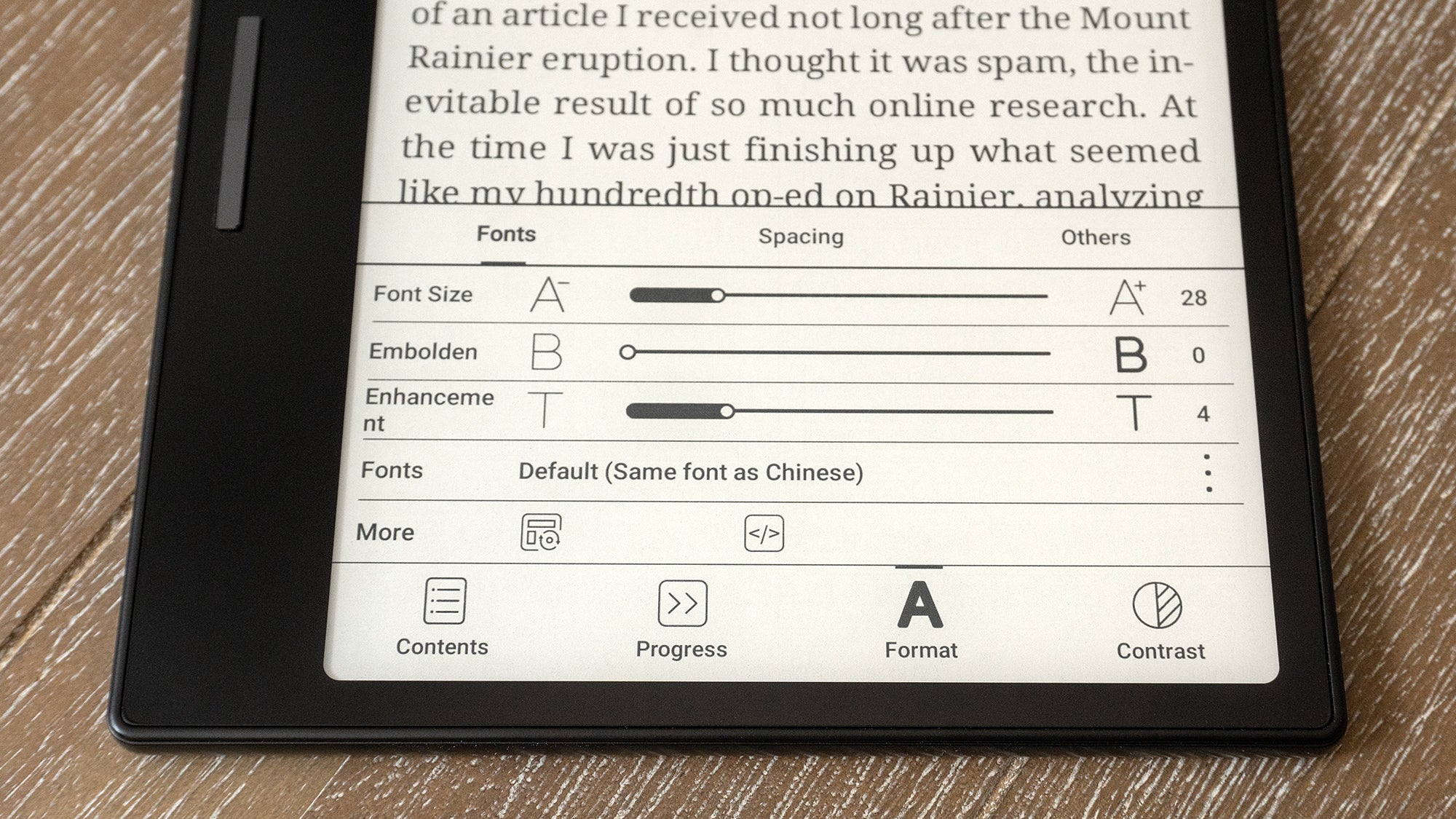
Side-loaded content, including ebook files, text docs, or PDFs, are accessed through the default Boox Neo Reader app, which itself offers an almost exhausting level of customisation when it comes to how content is displayed and the appearance of text. It’s certainly a welcome feature for power users, and there are options I’ve often wished were available on Kindles and Kobos, but at the same time I can easily see my parents getting overwhelmed by the countless menus full of sliders and toggles that the Leaf 2 presents a user. To broaden its appeal, I think that Onyx should consider adding a ‘dumbed down’ option that streamlines the UI for novice users and keeps more advanced and sometimes intimidating configurability completely hidden.
You’ll also want to keep in mind that the Leaf 2 is a $AU199 device running a Qualcomm 2.0G Quad-core processor from 2012, not a $1,000+ smartphone with the latest and greatest Qualcomm has to offer. That, coupled with the limitations of E Ink screen technology, means that documents like magazines or comic books, which often require a lot of zooming or panning to read, will not make for a pleasing reading experience on this device. And powering Android 11 on a decade old processor means the Leaf 2 isn’t the snappiest device you’ve ever poked. It’s still an e-reader optimised for text, first and foremost.
Source Your Reading Material From Everywhere
If there is one reason to choose the Boox Leaf 2 over a Kindle or a Kobo, it’s that not only are you not tied into a single content eco-system, you actually have easy access to all of them.
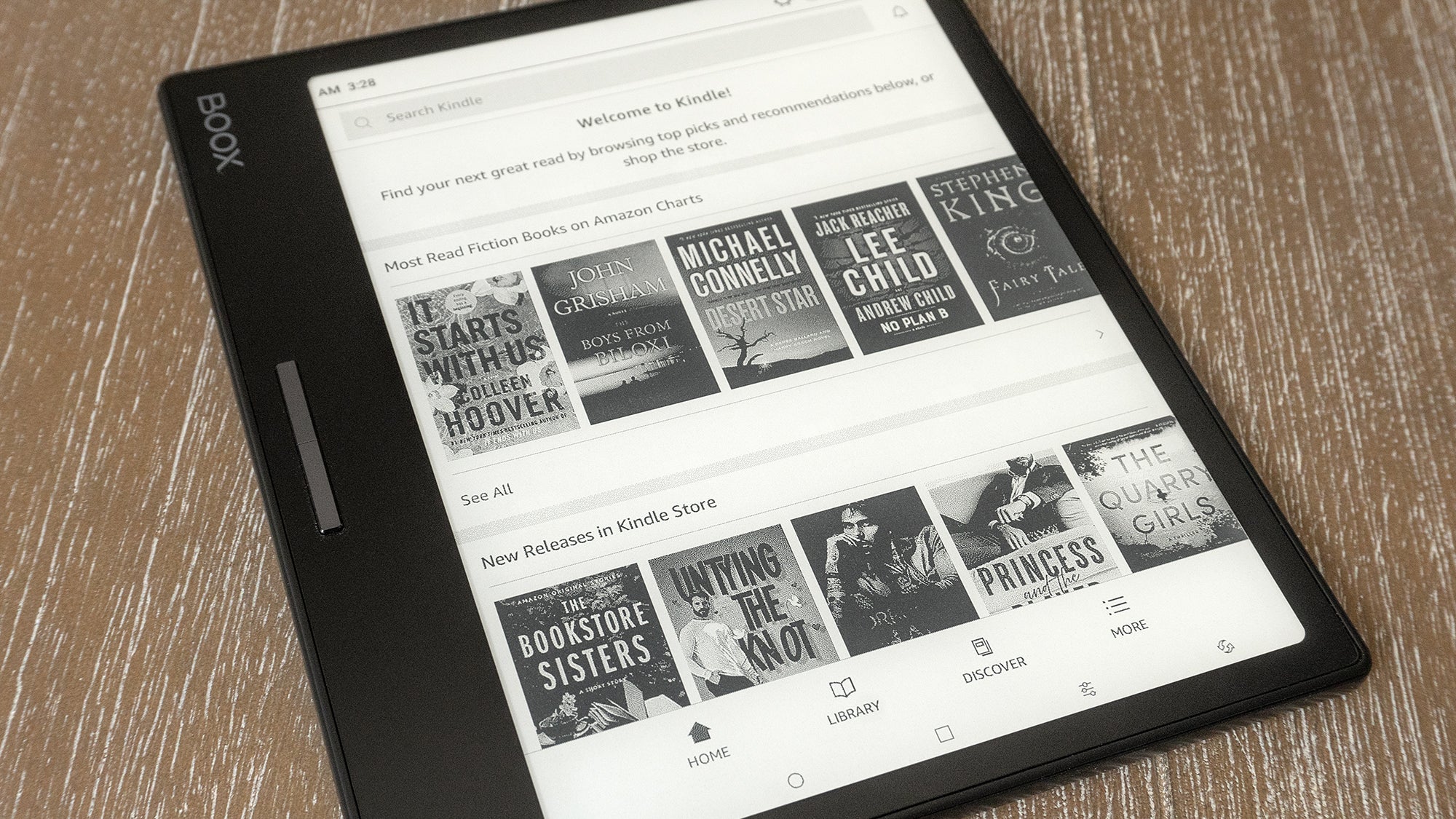
If you’ve been using a Kindle for years and have bought hundreds of titles from Amazon’s ebook store, you can just install the Android Kindle app on the Leaf 2 and still have access to all of that content.
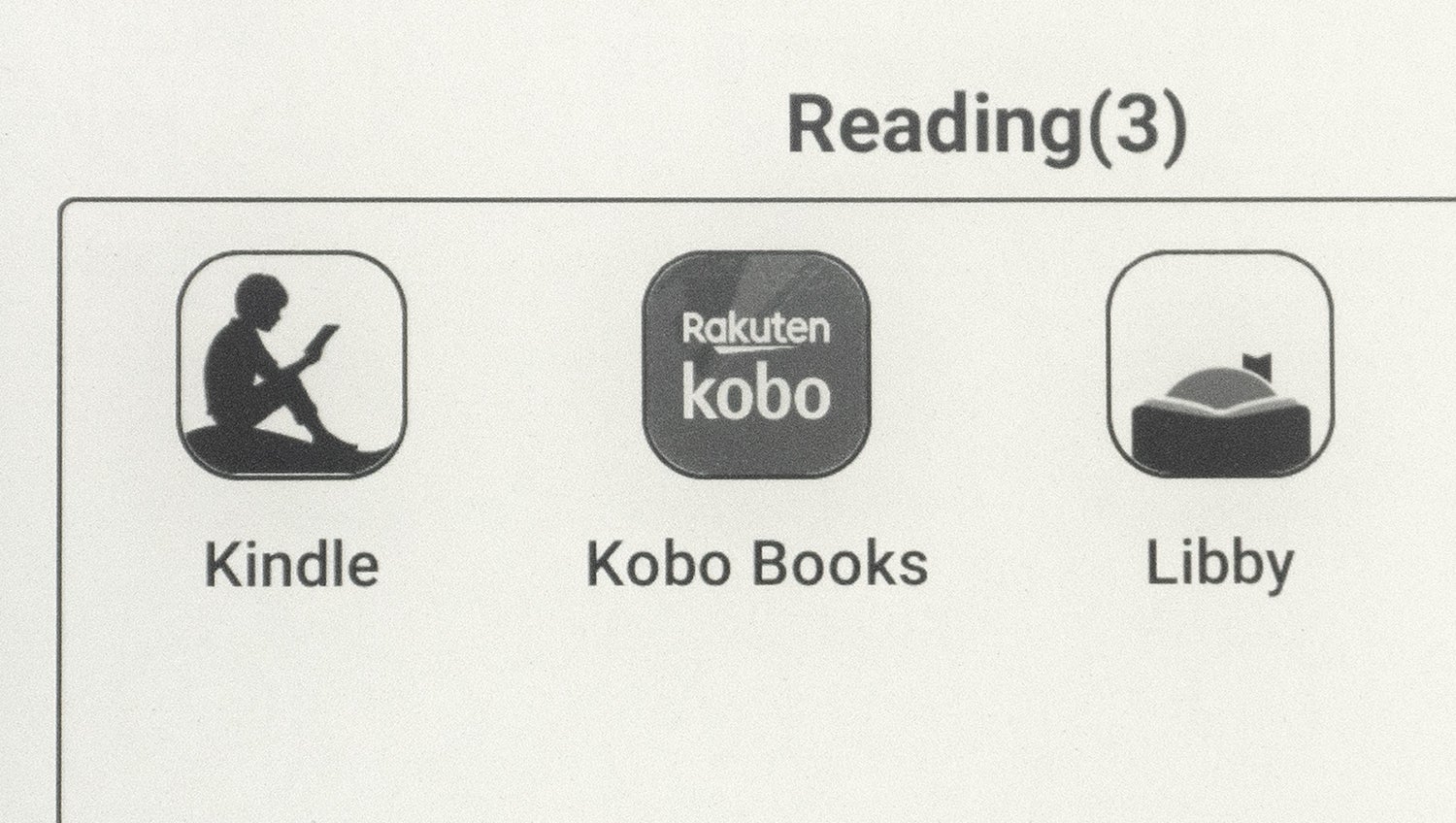
The same goes for the Kobo, or for those who for some reason were devoted users of the Barnes & Noble Nook. Prefer to not pay for ebooks but don’t want to venture into the darker corners of the internet? You can install Libby and borrow digital titles from your local library. The Leaf 2 does audiobooks too, with built-in speakers and Bluetooth for connecting to wireless headphones. You can even subscribe to all of the above services and source your content from as many sources as you want, all on one device that includes the easy-on-the-eyes benefits of E Ink screen technology.
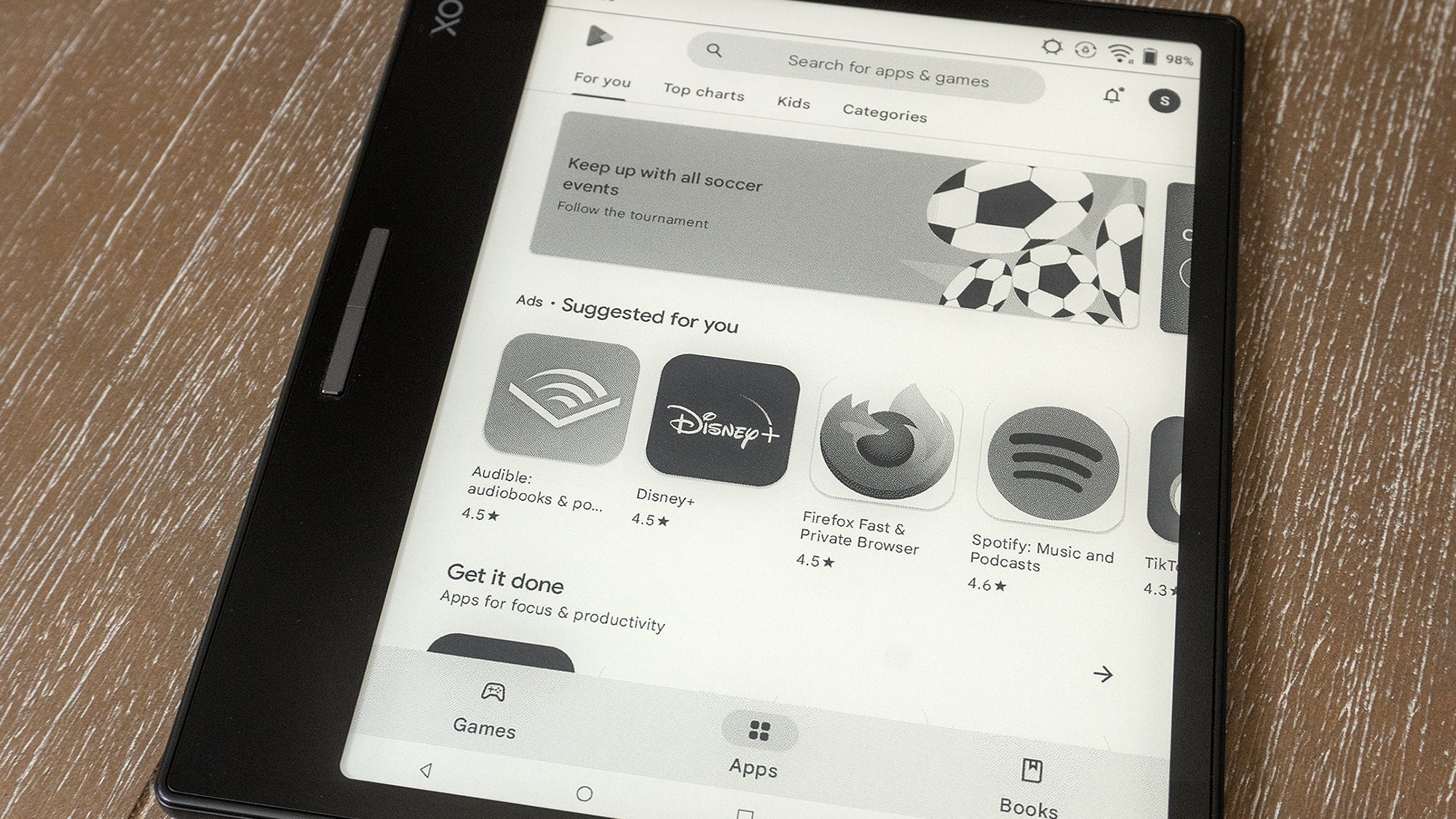
It doesn’t stop at books, though. With full access to the Google Play Store, you can install Spotify and use the Leaf 2 to stream music, or even see what watching YouTube videos on a device with an E Ink screen is like.
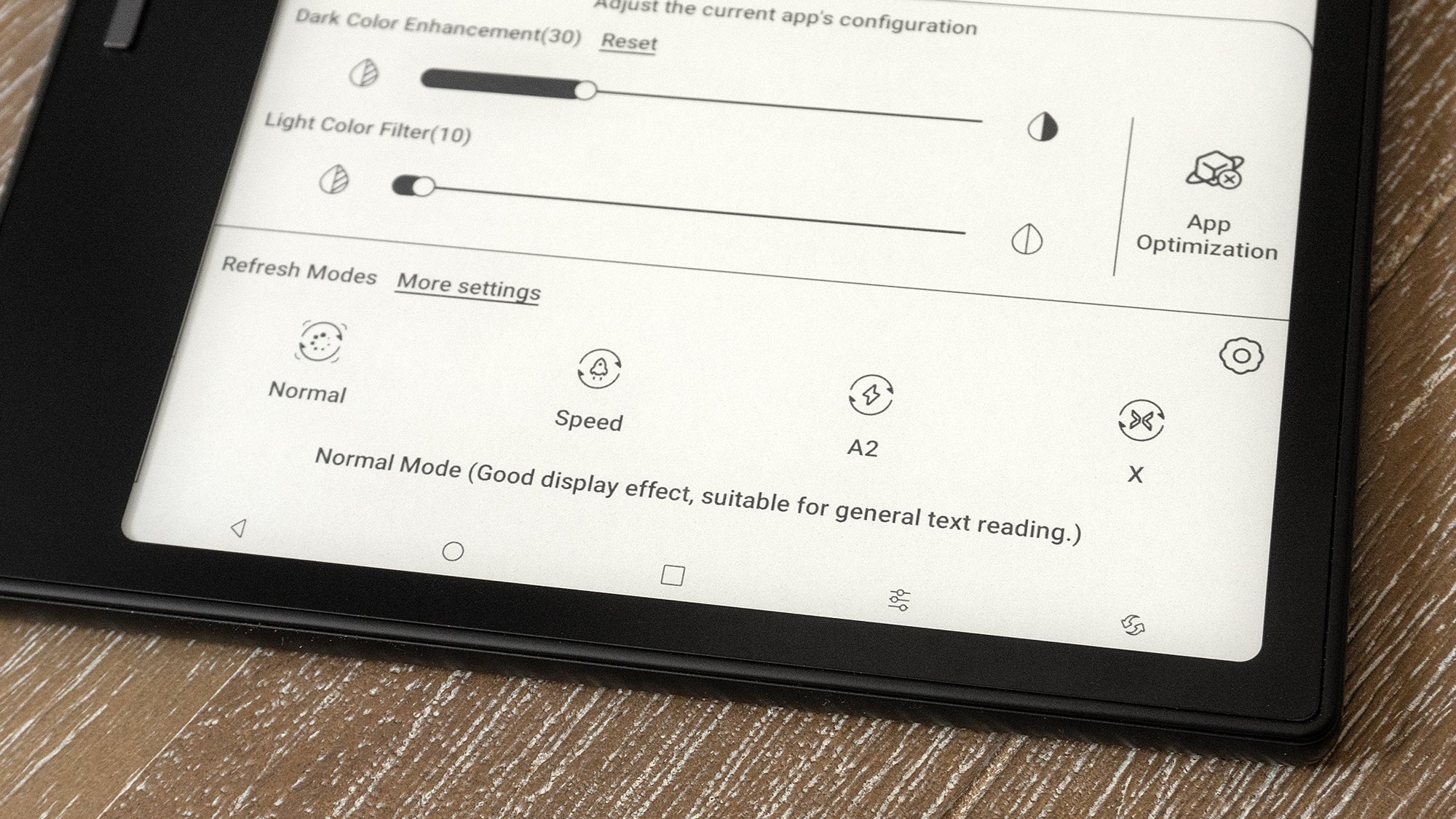
Spoiler alert: Even with several options for changing how the Leaf 2’s E Ink screen behaves, including a mode that prioritises refresh speed over image quality, watching videos on an E Ink device is still an unpleasant experience.
An Alternative Worth Considering
There are as many reasons to switch to the Onyx Boox Leaf 2 as there are to stick with your tried-and-true Kindle or Kobo. Its user interface can feel a little messy and clunky, and as much as I hate to say it, I wouldn’t trust my parents to figure it out on their own without many panicked phone calls to me. Onyx also doesn’t have as large a global presence as Amazon or Rakuten do, which could make getting support for a faulty device a trying experience.
That being said, for those dedicated to the task, the customizability of the Boox Leaf 2 means you can eventually get the e-reader functioning exactly how you like, while the flexibility of being able to jump from ebook store to ebook store whenever you want, on a single e-reader, is a compelling feature you’ll never see from the competition.
